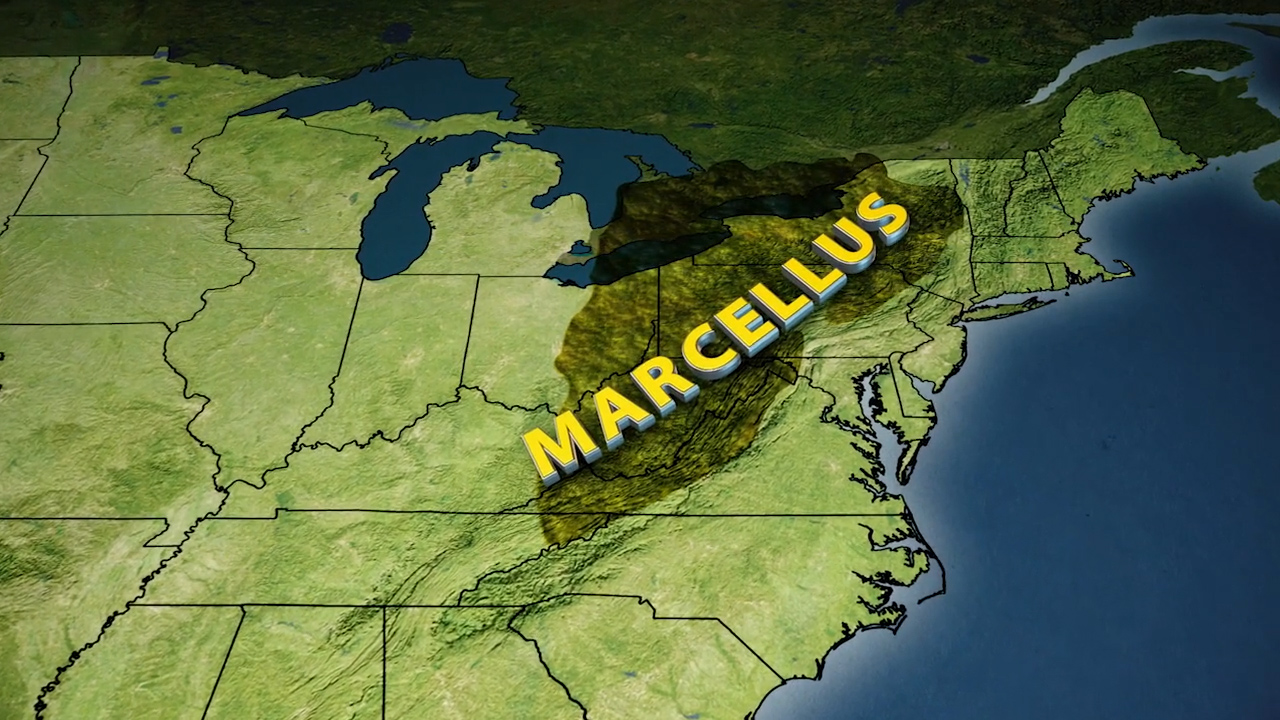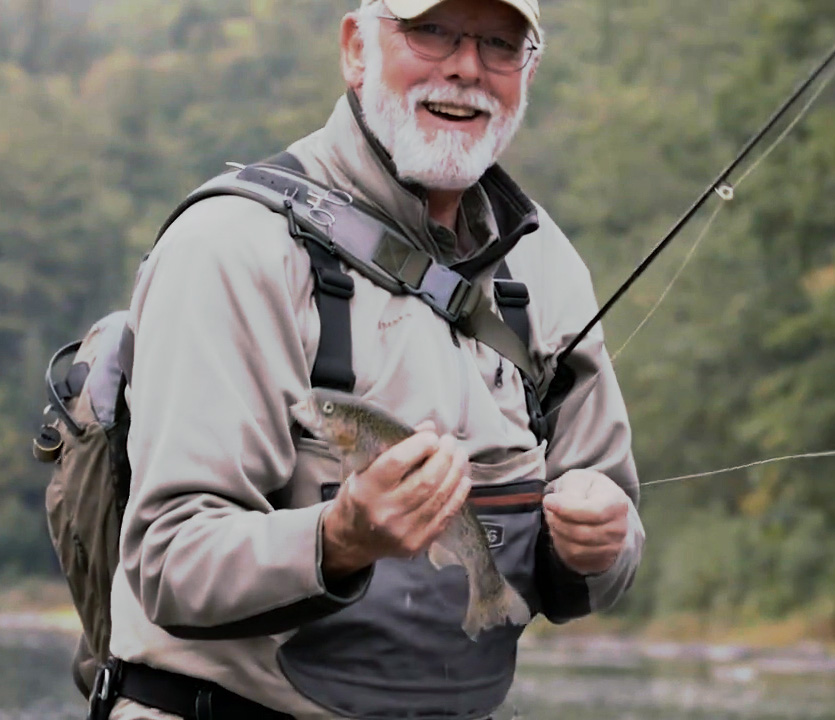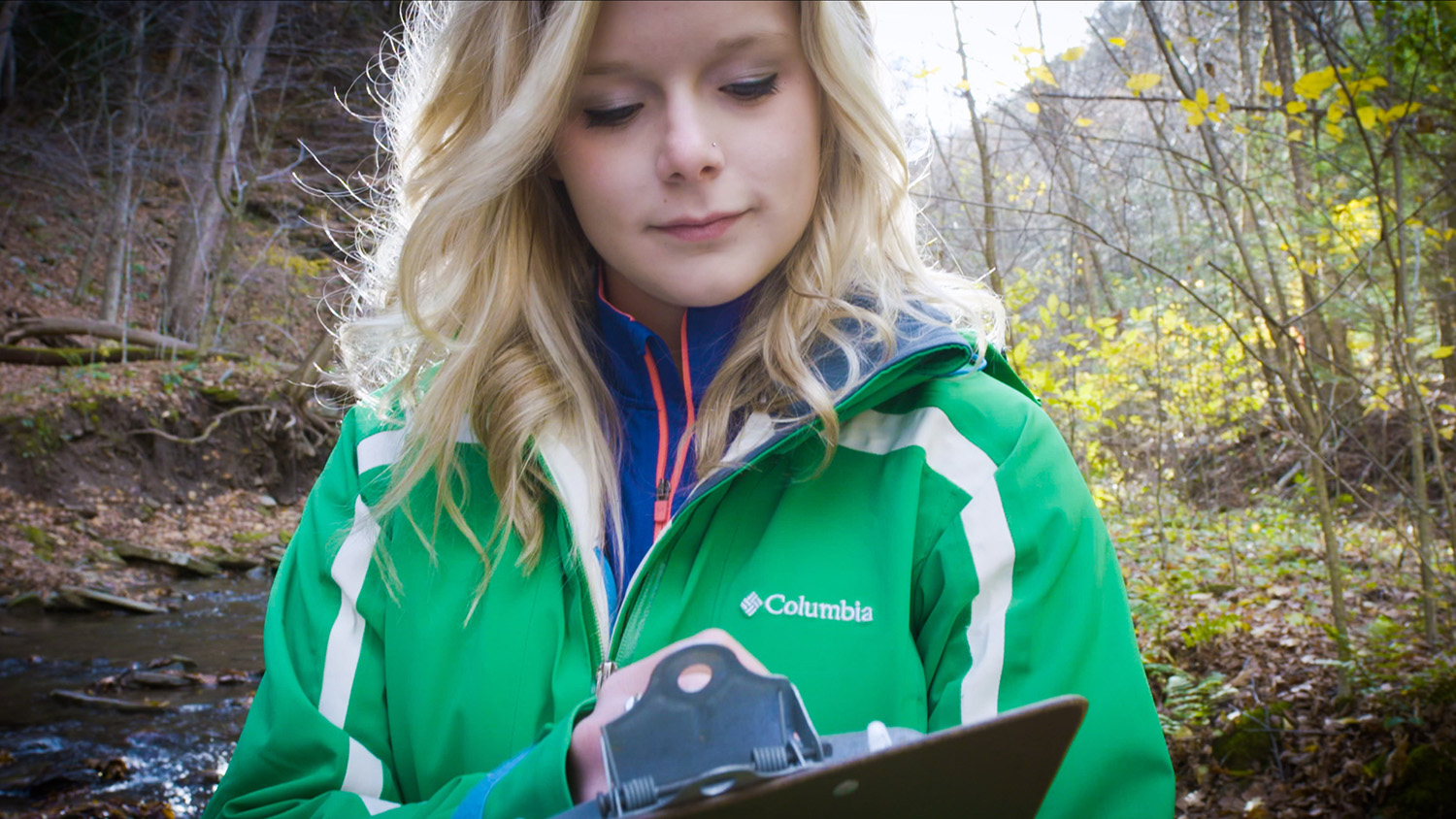
Newsletter
Sign up and stay in-the-know about The Crowd & The Cloud and the world of citizen science.


My name's Jake Lemon. I'm the Eastern Shale Gas Monitoring Coordinator for Trout Unlimited. I manage our citizen science program focused on monitoring for potential impacts from shale gas related development.
What is the Marcellus Shale region, and why is Trout Unlimited interested in studying it?
The Shale Gas Monitoring Program started in 2010, in Pennsylvania. It then expanded into West Virginia and Virginia. I cover the shale gas region of Central Appalachia. That's a large swath of Pennsylvania, West Virginia, the Monongahela National Forest, a little bit in Virginia, and the George Washington National Forest. Our focus is where the Marcellus Shale layer overlaps with brook trout habitat.

The Marcellus Shale region extends across Pennsylvania and West Virginia.
In the rugged terrain of north central Pennsylvania, the communities are primarily established in the valleys, which also happen to be where the rivers are. So, every community has a creek or river running right through it. It's really a part of the life blood of the area. This is also an area that just has amazing public lands, which have led to high quality coldwater streams. A lot of the shale gas development was happening in very remote regions of Central Appalachia, and it just happened to overlap with some of the best wild and native trout watersheds. We thought it was imperative upon us to get out and collect good data, to see if any pollution events were occurring, and to keep an eye on things.
When the shale gas industry came to this area, there was a definite lack of good baseline data. We're hoping that with the extensive monitoring that we've been doing, should there be another large scale boom in the area, we'll have adequate baseline data to compare against our post development data to see if there are changes. Also, without an informed citizenry out there, if issues do arise, they can go unnoticed maybe forever. Having folks out there who know what they're looking for, know how to report it, and have a voice, keeps those issues from continuing on and causing further damage.
How do you know your data is accurate? Who uses it?
Our protocol was developed in partnership with the Alliance for Aquatic Resources Monitoring at Dickinson College, which has been doing citizen science work for some time. They’re based off of EPA established protocols and have been vetted by state agencies, like the Pennsylvania Fish and Boat Commission, and the Pennsylvania Department of Environmental Protection.
I think we have a really unique and robust data set in that it focuses on some of these more remote areas where shale gas development is happening. We've had various agencies and institutions reach out to us and use our data in their research including EPA, West Virginia Department of Environmental Protection, Penn State University, Massachusetts Institute of Technology, and various other entities. They see value in volunteered data. It's a great resource of large data that they couldn't collect with their professional staff alone.
Our volunteers are out there on a monthly basis, so we can capture seasonal variability that you find in water quality parameters, and establish a firmer baseline data set for these streams. Part of my job is to help folks identify strategic monitoring locations, providing technical support and using the best available information to site our monitoring areas in the right place at the right time. We use an analysis that was put together by the Nature Conservancy that projects the probability of future shale gas development in given areas, and we overlay that data with trout population data to identify the areas where it's most needed for us to collect baseline water quality data. We also use the locations of existing shale gas well pads to site monitoring locations downstream.
Who volunteers for Trout Unlimited?
Our volunteers are typically folks who fish, hike, and recreate in these places. There’s nobody better to keep an eye on streams than the folks who are already there. Anglers know their home waters, how they should look at certain periods of the year, and so they are best suited to identify any potential pollution events that could occur. Anybody can do these protocols. It takes dedication and a love of the places you are protecting. Throughout Pennsylvania, West Virginia, and Virginia, we're at about 300 volunteers right now, who are monitoring about 400 sites.
The core of our cohort of volunteers are retired folks. They have the time, and are looking for ways to positively contribute to their communities. That said, we work with a wide range of age groups. The nice thing about this kind of volunteer work is you don't have to be at a particular place at a particular time. You can go out to the stream on your own time and collect data. It's an approachable way of meaningful volunteering for folks who are busy with families and jobs.
Are Trout Unlimited volunteers considered “watchdogs”?
Our whole process and protocol is backed by sound science. We let the science do the talking, it drives our strategies and results. Our program gives everyday citizens the ability to tap into that science, and use it to see if there are any issues occurring in their watershed. It's a really hands on and practical way to protect their watersheds. We have volunteers who are all shades of the political spectrum. Some even work in the shale gas industry themselves, so we're not necessarily out to get a particular industry, rather we're here to make sure coldwater resources are protected.
Tell us about pipeline development in your area?
With all this shale gas extraction, there's a need to move that gas to eastern markets. There's a lot of pipeline infrastructure being put into place throughout Pennsylvania and Central Appalachia. These pipelines can range in size from 12 inches up to 44 inches in diameter. There's been projections that Pennsylvania could see up to 26,000 miles of new pipelines by 2030. This is a major land use change, and in an area like ours with so many streams, these pipelines are bound to cross them, and obviously they're always within a watershed.
We are going to be working with volunteers over the coming years to develop a new protocol based on our shale gas monitoring protocol, focused on pipelines. We'll be looking primarily at identifying potential erosion and sedimentation impacts, and reporting them, as well as looking at long term changes that may occur in the watershed and in-stream habitat.

The one that didn't get away!
Why is it important to preserve coldwater trout habitat, or coldwater habitat, in general?
One reason that preserving coldwater habitat is so important is that trout are often found in the best, most wild and pristine places that we have left. They can serve as a signature species that shows us where high quality habitats are, and which places to protect. Secondly, they're a great recreational resource for these communities, it’s a big part of the economy. It's important that we foster that, and protect the sources of that recreation that's so important to these local economies. Finally, we value these species. We value the opportunity to fish for them, and we love trout. It's what we're about, protecting trout habitat and the watersheds.
I live just south of Tioga County in central Pennsylvania, and I cover basically all of Pennsylvania, and I actually work down in West Virginia in the Monongahela National Forest, and in Virginia in the George Washington National Forest. I cover a lot of miles and a wide expanse of area. While all these places are important, this area has actually really taken ahold of my heart, as it goes for wild places in Pennsylvania. It's my favorite place in Pennsylvania, and it's a place I come up on the weekends, to hike and to fish, and spend my free time. As someone who's been all around the state and all throughout central Appalachia, this is a really special place, and a place that needs to be protected, and that needs to be treasured.

Natalie Mee is a regular TU volunteer.
What do you find most rewarding about the work you do?
I have this network of individuals and citizens throughout the region that I've connected with. It's been awesome getting to know these people who care so much about their home waters, and are willing to spend so much of their time protecting it. I work with such a diverse subset of folks, from college students to hardcore hunters, fishermen and sportsmen, to just people who like to recreate in the outdoors and really value clean water. It's been great just meeting these really dedicated people throughout the region.
I've seen some of the best public lands, best streams and habitat that this region has to offer. When I go in, I'm able to plant seeds that hopefully grow into a nice localized monitoring effort, that can have substantial impact to protecting local waters. We are giving folks a really tangible and practical way for them to protect their local streams. We are providing folks with tools so they can collect high quality data and have a positive impact on local waters, connected to a region wide effort.
